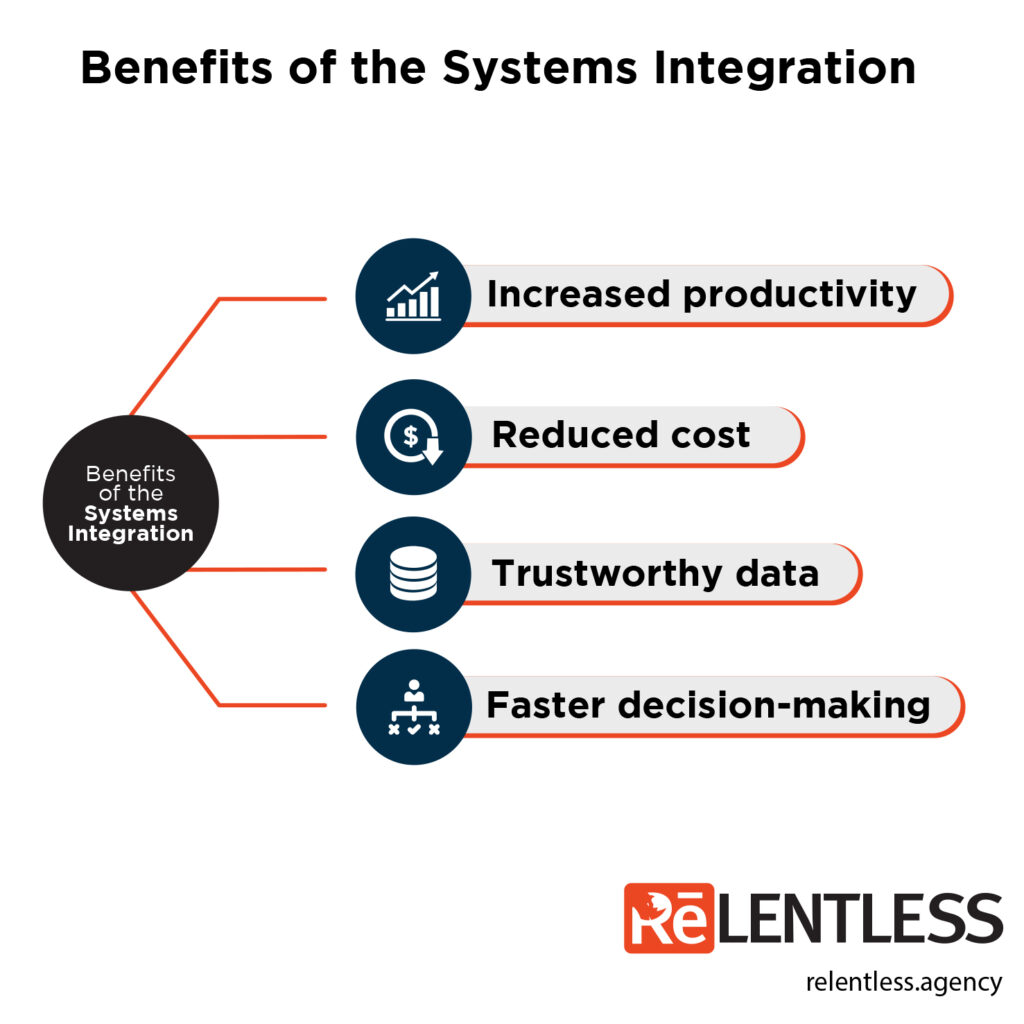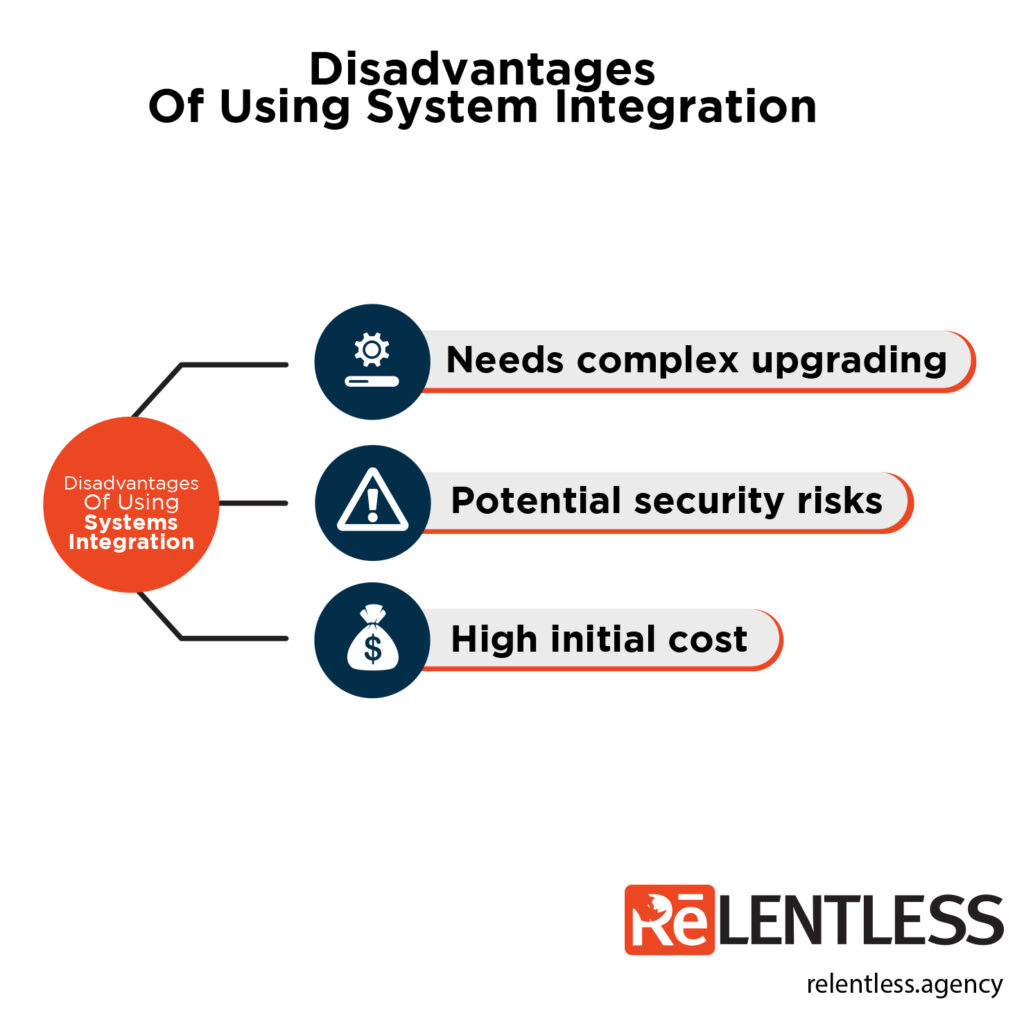When you have a system consisting of several components, it is essential to connect and intertwine them to operate smoothly. By using system integration, you can improve the quality and productivity of your system and increase your overall product value.

In the following paragraphs, we will explain system integration, how it works, and how it can help your business.
What is System Integration?
By engineering definition, where the term comes from, system integration represents a process of connecting different subcomponents or subsystems into one holistic system. Engineers ensure that all subsystems operate with utmost coordination and efficiency.
In Information Technology (IT), system integration refers to interlinking and connecting different computing systems and software to work as one coordinated unit. In other words, system integration is joining hardware and software modules to create a stable infrastructure.
Common examples of systems that benefit from being integrated are: A business has an application that helps keep track of inventory, and invoicing system, which different software publishers wrote. Employees must manually feed information about items that left the warehouse to the invoicing system. In case of order returns, chaos ensues.
Why is System Integration Important?
System integration brings along a few benefits for every business to prosper.

Increased productivity
When you have many systems that are all separately contributing to your product, it can be tricky to operate and coordinate them.
In addition, there are many things to keep track of, and at some point, you will lose it, and the possibility of the system falling apart becomes real.
System integration will allow you to connect and have centralized control over your system’s different components and parts to avoid that scenario. As a result, control over the workflow increases, and more work gets done.
Cost reduction
Integrating the system is more efficient and money-saving than replacing all previous parts with a new singular one. It would require too much time and money but would not make much difference.
Moreover, system integration allows you to reconnect everything without implementing new and complex computer infrastructures.
Trustworthy data
System integration allows you to update any data across all subsystems simultaneously. That way, you do not have to spend time on a separate update process – it’s all done in one place simultaneously.
Fast decision-making
When your system operates as a whole, it will be easier to find data. No more manual download and export to the central storage, where you have to do everything step by step. With system integration, all your data will be connected and readily available, allowing you to make fast business decisions.

What Are the Disadvantages Of Using System Integration?
System integration can bring potential downfalls, so try to have as much control as possible. That way, you will prevent more significant issues from occurring.

Complex upgrading
A system integrator needs to link all software components, upgrade them and make it all run smoothly, which can be a long, complex, and demanding process, suitable for more than one person.
Security Risk
System integration brings along specific security risks. Therefore, during software development, try adding a few extra security measures so that all the data the integrated system handles will be safer.
High initial cost
System integration can reduce overall costs, but the initial investment is required. The reason is that a system integrator needs to invest human resources (programmer hours, computers, etc.) in every program that they write while integrating. Nevertheless, it pays off in the long run.
Methods of System Integration
System integration can be done in several ways, depending on how you want your system to operate. The type of integrated software will also determine the kind you will need to use. If you don’t have much experience, seek professional advice and hire experts in the field.
Point-to-Point Integration
This system integration is specific because it involves connecting and integrating two points. Data from one point/system is modified and sent to the other. It’s best to use it when your business operates on just a few modules. We recommended it to companies connecting to SaaS applications.
Horizontal Integration
Integrators use this type of system integration when two businesses from the same branch connect. It’s an excellent strategy for competition reduction because it lets companies cooperate and create supply chains, increasing productivity by working together rather than undermining each other. They use one separate sub-system as an interface layer, which will connect different layers and sub-systems.
Vertical Integration
This integration method allows businesses to claim ownership over specific parts of the supply chain without depending on other companies. The integrator can distinguish two subtypes – forward integration, which enables the business to control the sale, distribution, and overall finished products; backward integration moves the ownership to the owner of the previous step in the production system or a supply chain.
Types of System Integrators
It’s time to look at different integrators you can use when integrating the system. These are crucial for integration because the process depends on how various systems are connected.
Application programming interface (API)
By using APIs, you transfer data and functionality to one standardized format, which uses the same code language, and connect the systems with it. It is widely available and is currently commonly used as an integration strategy. However, the biggest flaw is the time needed to finish the process since it is code-based, and programming might take a while.
Orchestration systems
This integration is automated, and its primary goal is to consolidate the repeated processes, so the flow of information is more efficient and transparent. However, it increases production and demands a lot of coding for software development since it is code-based. The process is quite complicated and requires a lot of time and energy.
Webhooks/ HTTP Callbacks
This integration is not coded but event-based, meaning the management can access it all in real time. Because independent, third-party actions trigger the programming modules in the subsystem, and information is updated with every event automatically, there is no need for management to be omnipresent, and the business does not have to schedule and separately perform data collection.
An example of Integration Service
Relentless Agency has worked on integrating R2 and WooCommerce. In origin, R2 runs on an Oracle database, using Microsoft .Net applications in a client/server model. It requires an executable file/program to run on Windows.
UBS made a REST API end-point using Microsoft Internet Information Services (IIS) and WSO2, so it will allow external agents to read and write to the Oracle DB through this combination. In addition, we have already created a connector for CS-Cart queries corresponding to R2, allowing order placement from the website.
In conclusion, system integration services are valuable for upgrading your business and making solid inter-business connections. By doing so, productivity will drastically increase, and your business can continue with prosperous actions, leading to resolving your business goals.
Make sure you hire a team of experts to work in your favor – they will know what strategy to implement and the best way to conduct a system integration.
